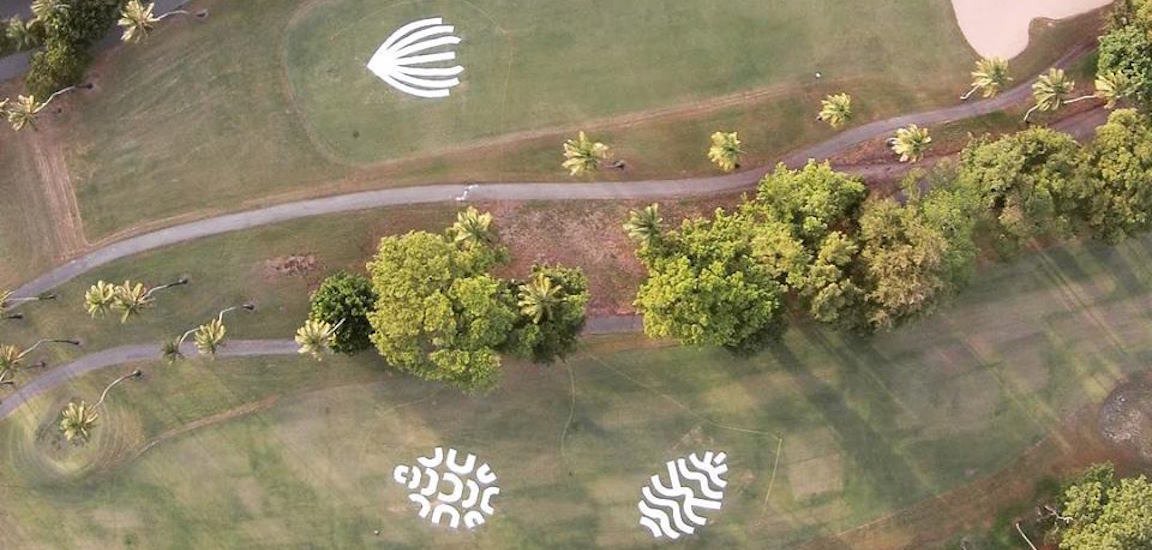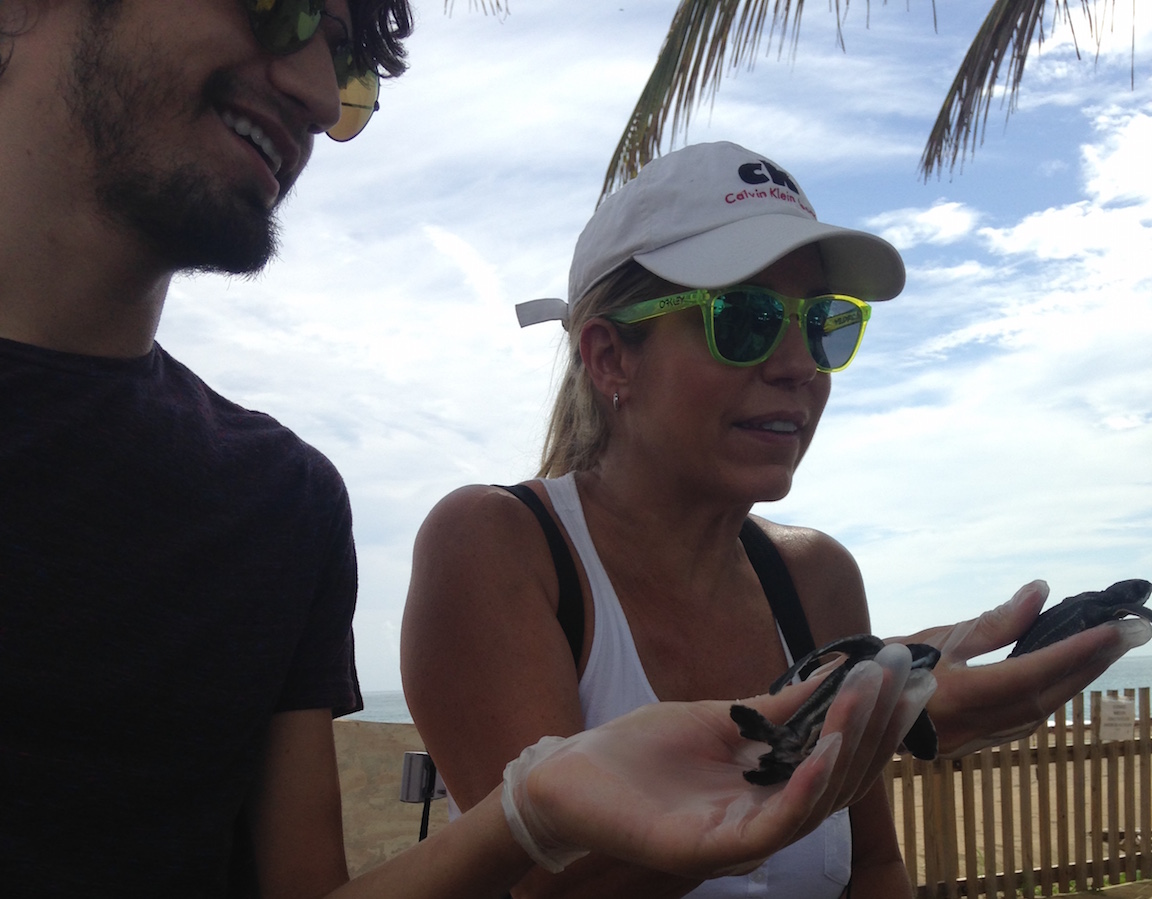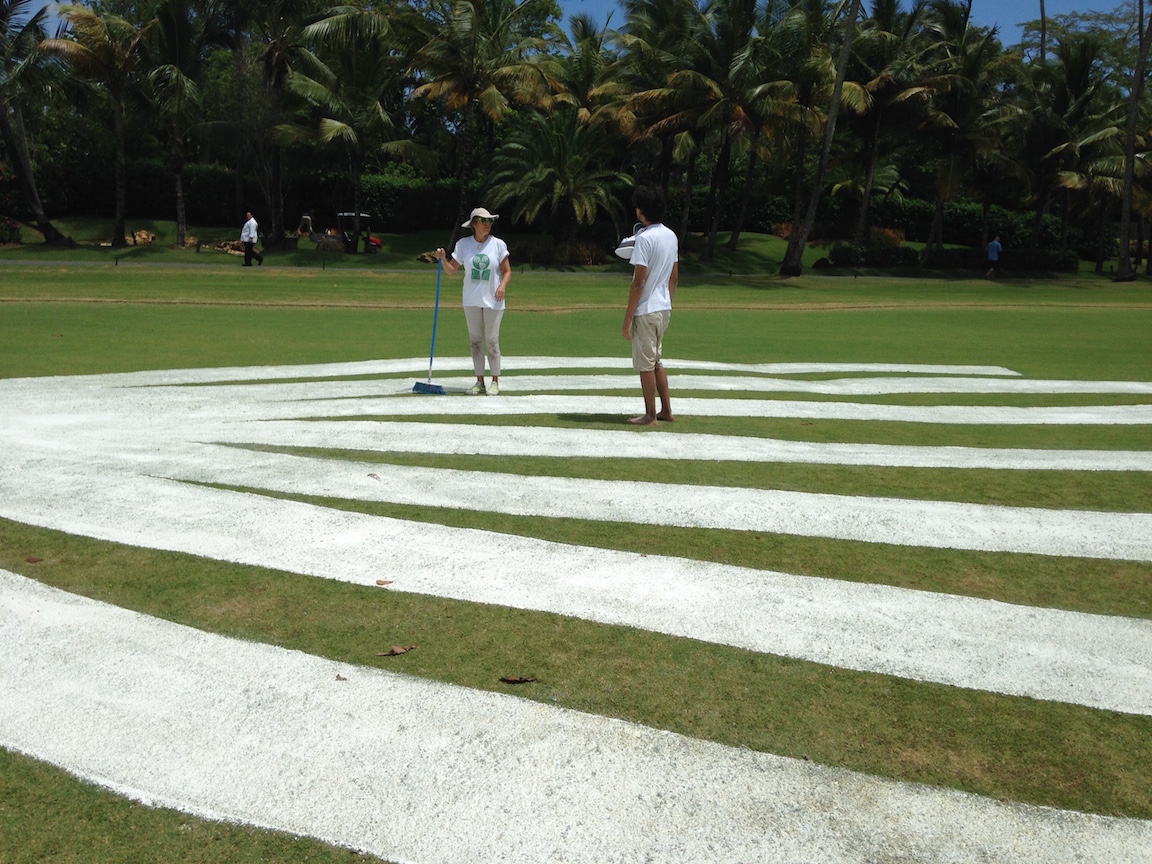
UNAMBIGUOUS ABOUT THE AMPHIBIOUS
An interview with Aisen Chacín
In July 22, 2015, arte_FITS.FOUNDATION celebrated the inauguration of Venezuelan artist, Aisen Chacín’s In The Rough: A Tour Of Geometric Ecology. Chacín, born in Madrid and eradicated in Venezuela, focuses her works on social issues such as poverty and the maltreatment of children. As a mother and an artist, Chacín educates in a way that allows one to step out of the comfort zone and realize all the controversy the world is faced with daily. For the Triennial 2015, the artist painted the geometric patterns found on marine turtle shells as a way to create consciousness on the endangered specie that nest in the island of Puerto Rico.
ARTE_FITS: At which point of your life did you realize you wanted to create art installations?
AISEN CHACIN: Ever since I can remember, I’m drawing and painting. My great grandfather was Arturo Michelena so I’m lucky to come from a family of artists and musicians.
I was actually born in Madrid and raised in Venezuela. When I was four, I won my first drawing contest which was published in a magazine in Caracas. For college, I majored in graphic design at the Neumann Institute of Design in Caracas and The New England School of Art and Design in Boston. I also have a variety of certified courses taken in studio houses in Houston and Singapore. My artworks are mainly influenced by the contemporary world and the need to express compassion and conscience through conceptual works.
AF: Many of your works allude to worldwide social issues. What is gained through these projects?
AC: Create consciousness and draw attention to these problems.
My most important installations are about kids in poverty and the topic of sexual abuse by religious leaders. These works allow the undiscussed dilemmas to surface and illustrate them through art. Although I began the installations in 2005, now a day we know much more about these realities.
AF: Out of all the animals found in the island that are in danger of extinction, why did you choose the turtle for your work in the Art In Golf Triennial 2015?
AC: Before presenting the proposal for the Art in Golf, I did some research and learned the ecological importance marine turtles represent for Puerto Rico, along with the fact that they are in danger of extinction.
The artwork shows the geometric shell patterns of three marine turtles painted white in the grass of the golf course, thus depicting a spiritual footprint; like my previous installations. These drawings will eventually vanish with time, symbolizing the unfortunate luck many marine turtles have.
AF: How does In The Rough: A Tour Of Geometric Ecology make reference to the game of golf?
AC: This is my first artwork in a golf course although I, by chance, am a golfer. In golf, the term “rough” identifies a part of the course where the grass is much more abundant. “Rough” also identifies the hardships turtles go through in this century, explaining how our modern lifestyle has inflicted ecological changes that affect them as marine specie.
The game of golf consists of playing eighteen different holes. The idea of a “tour” is to walk all these holes and find variety of geometric patterns derived from the inspiration of the designs and protuberances that turtles have on their shells.


